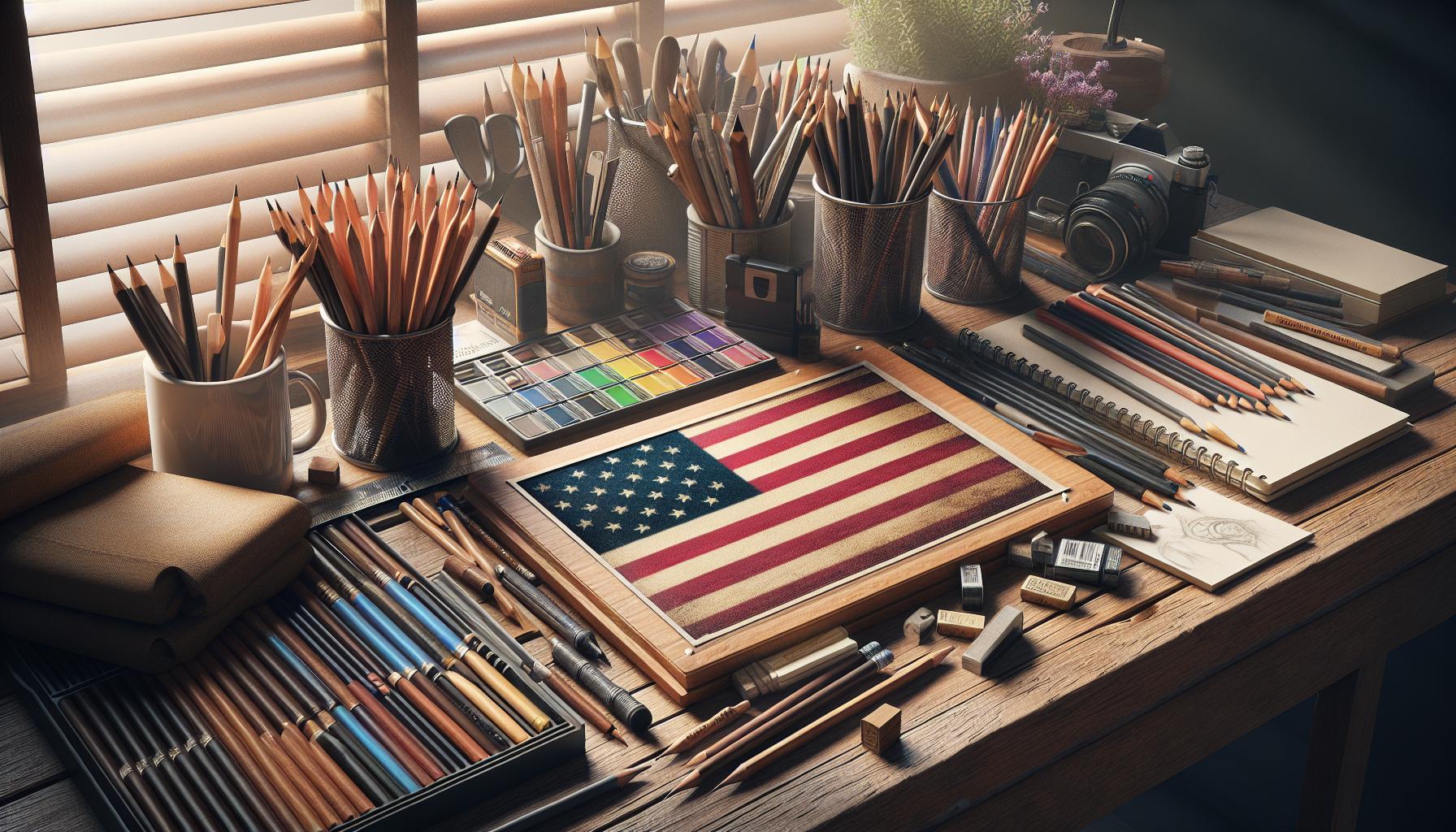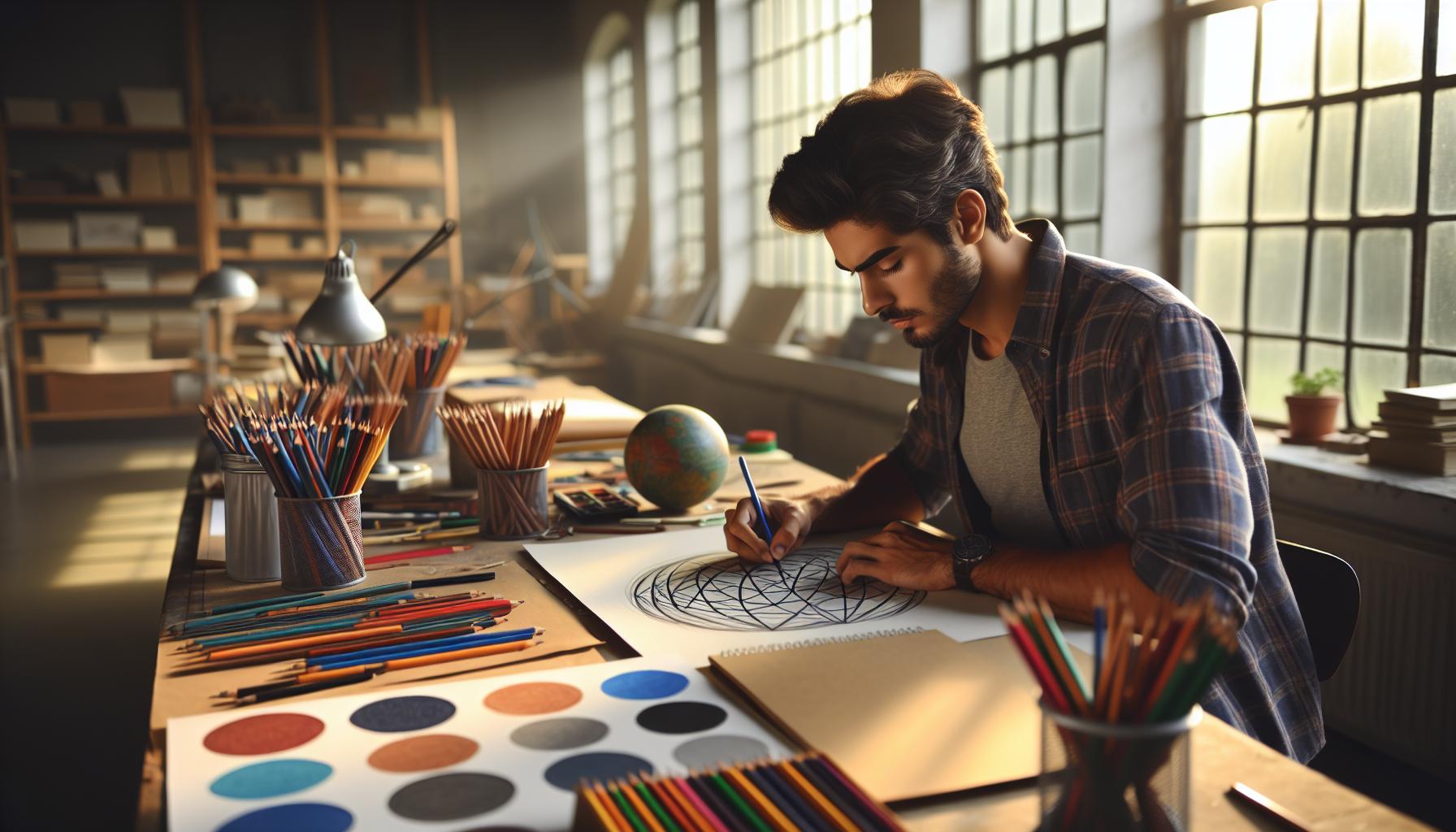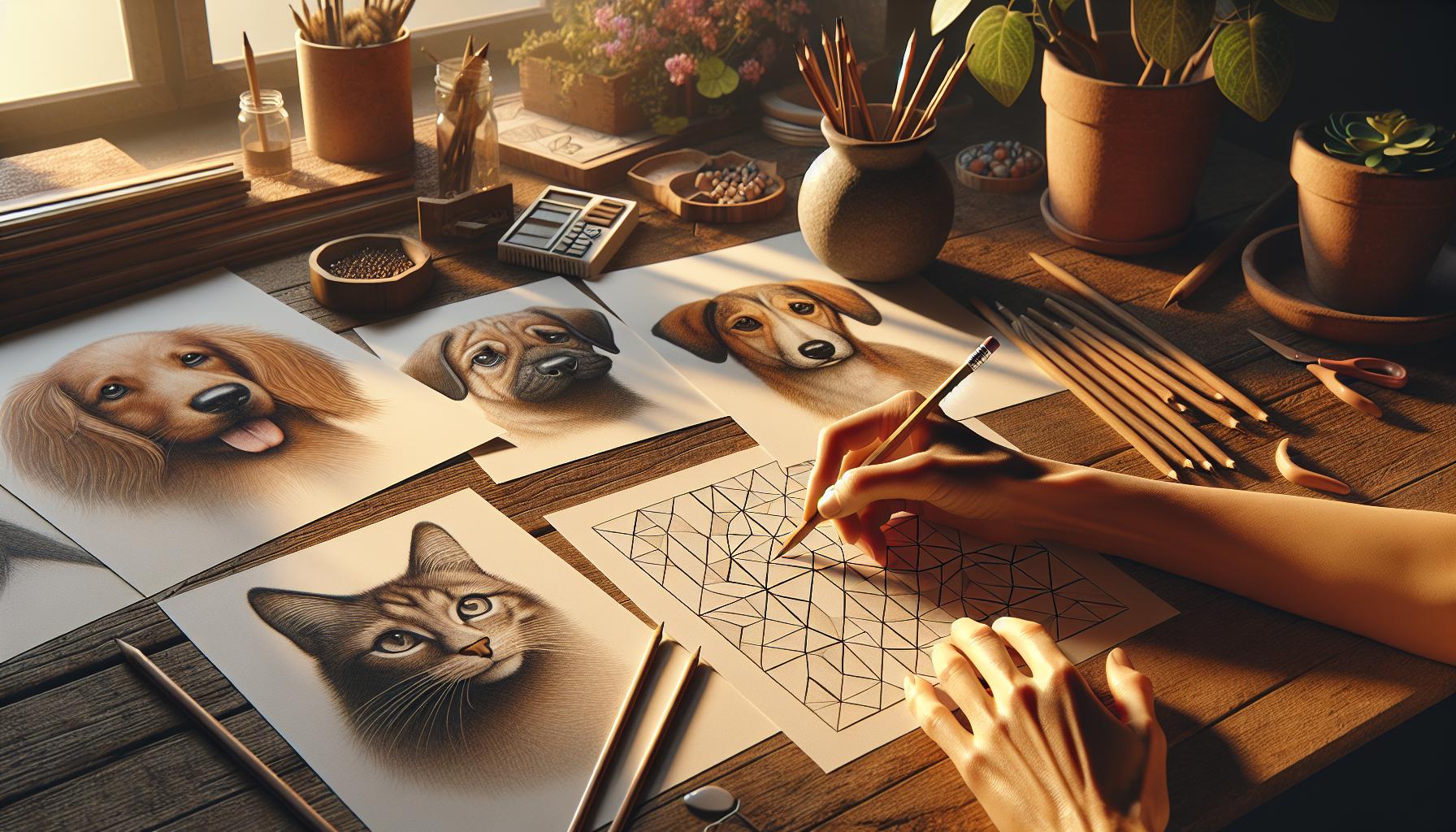Unleashing creativity through simple drawings has never been more accessible with “faciles:fs01uvzcddy= dibujos.” This unique art form combines basic techniques with engaging step-by-step guidance perfect for beginners and seasoned artists alike.
Whether you’re looking to doodle during a boring meeting or create charming illustrations for your journal these easy-to-follow drawing methods will transform basic shapes into impressive artwork. The “fs01uvzcddy” technique breaks down complex images into manageable pieces making even the most intricate designs feel like child’s play. Plus it’s a fantastic way to reduce stress and unlock your inner artist without the pressure of perfection.
Faciles:fs01uvzcddy= Dibujos
Easy drawings serve as foundational artistic exercises that transform basic shapes into recognizable images through simple steps. Circles evolve into expressive faces, squares become buildings, and triangles create mountains or trees using straightforward techniques.
These beginner-friendly sketches offer several key advantages:
- Builds Confidence: Starting with basic shapes lets artists experience quick success
- Develops Motor Skills: Regular practice enhances hand-eye coordination and precision
- Reduces Artistic Anxiety: Simple approaches eliminate the pressure of creating perfect artwork
- Teaches Fundamentals: Artists learn essential concepts like proportion, perspective and shading
- Creates Daily Habits: Quick completion encourages consistent practice
The faciles:fs01uvzcddy= dibujos method breaks down complex images into manageable components:
| Drawing Element | Time Investment | Skill Level |
|---|---|---|
| Basic Shapes | 5-10 minutes | Beginner |
| Simple Objects | 10-15 minutes | Beginner |
| Characters | 15-20 minutes | Intermediate |
| Landscapes | 20-30 minutes | Intermediate |
Artists start with fundamental patterns like:
- Geometric shapes (circles, squares, triangles)
- Simple lines and curves
- Basic patterns and textures
- Primary forms (cubes, spheres, cylinders)
These elementary drawings provide a structured path toward more complex artwork while maintaining an enjoyable creative experience. Each successful sketch builds artistic momentum and creates a foundation for advanced techniques.
Essential Drawing Materials for Beginners

Starting with faciles:fs01uvzcddy= dibujos requires a strategic selection of art supplies that balance quality with simplicity. The right materials enhance the learning experience while keeping costs manageable.
Basic Supplies You Need
Drawing beginners require five fundamental tools to start their artistic journey:
- Graphite Pencils:
- HB pencil for initial sketches
- 2B pencil for darker lines
- 4B pencil for shading
- Quality Sketchbook:
- A4 size (8.27 x 11.69 inches)
- 70-90 lb paper weight
- Spiral-bound for easy page turning
- White Vinyl Eraser:
- Clean removal of pencil marks
- Non-smudging properties
- Minimal paper damage
- Pencil Sharpener:
- Manual dual-hole design
- Metal blade construction
- Portable size
- Drawing Paper:
- Smooth texture
- Medium weight (80-100 gsm)
- Bright white color
- Colored Pencils:
- 12-piece basic set
- Wax-based core
- Premium brand options
- Drawing Markers:
- Fine-point tips (0.3-0.8mm)
- Archival ink
- Black color selection
- Blending Tools:
- Tortillons for smooth gradients
- Blending stumps
- Tissue paper
- Artist Tape:
- Low-tack adhesive
- 1-inch width
- Paper-friendly removal
- Drawing Board:
- Lightweight material
- 16×20 inches size
- Clip attachments
Simple Drawing Techniques to Master

The faciles:fs01uvzcddy= dibujos technique establishes fundamental drawing skills through progressive learning methods. These techniques transform basic elements into complex artwork through structured practice.
Basic Shapes and Forms
Geometric shapes form the foundation of the “faciles” drawing method. Artists start with circles, squares, triangles, rectangles to create recognizable objects:
- Circles become the base for faces, fruits, wheels
- Squares transform into buildings, boxes, digital devices
- Triangles create mountains, roofs, tree shapes
- Rectangles develop into doors, windows, books
These shapes combine to form compound objects like houses (triangle + square) or cars (rectangles + circles). The technique emphasizes practicing individual shapes before combining them into more complex forms.
Line Drawing Methods
Line quality defines the character of “faciles” drawings through distinct stroke types:
- Continuous lines create fluid, unbroken contours
- Hatching adds texture through parallel lines
- Cross-hatching builds depth with intersecting strokes
- Stippling creates shadows using clustered dots
- Gesture lines capture movement in quick strokes
Each line type serves specific purposes: continuous lines for outlines, hatching for shading, stippling for gradual transitions. The method teaches artists to vary line weight by adjusting pressure on drawing tools, creating depth through thick outlines contrasted with thin detail work.
Step-by-Step Easy Drawing Projects

The faciles:fs01uvzcddy= dibujos technique transforms complex drawings into manageable sequences. These projects guide artists through systematic steps to create polished artwork while building fundamental skills.
Animal Sketches for Beginners
Animal sketches start with basic geometric shapes as building blocks for complex features. Artists begin by drawing circles for heads, ovals for bodies, triangles for ears to create cats, dogs, rabbits or birds. Adding details like eyes, whiskers, fur textures follows the initial shape placement. The technique breaks down animal features into five key components:
- Basic shape outlines (circles, ovals, triangles)
- Proportional guidelines
- Feature placement (eyes, nose, mouth)
- Detail refinement (fur, scales, feathers)
- Shading and texturing
Simple Nature Elements
Nature drawings incorporate organic shapes and flowing lines to capture botanical elements. Artists practice with leaves, flowers, trees, clouds or mountains using these fundamental patterns:
- Curved lines for petals and leaves
- Branching patterns for trees
- Wavy lines for grass and water
- Layered shapes for mountains
- Circular patterns for clouds and sun
The method emphasizes observation of natural forms through:
- Single continuous line drawings
- Symmetrical pattern creation
- Basic shape combinations
- Organic form development
- Textural mark-making techniques
Each element builds upon previous skills while introducing new artistic concepts through progressive complexity.
Tips to Improve Your Drawing Skills
Regular practice establishes essential muscle memory for consistent line control. Dedicating 15 minutes daily creates more impact than sporadic longer sessions.
Starting with basic shapes (circles squares triangles) develops foundational skills before advancing to complex subjects. Drawing from observation enhances spatial awareness understanding of form light shadow.
Essential Practice Techniques:
- Study reference images before starting each drawing exercise
- Break complex objects into simple geometric forms
- Focus on one specific skill (shading line work perspective) per practice session
- Draw the same subject multiple times from different angles
- Maintain loose wrist movements for fluid lines
- Keep drawings at arm’s length to maintain proper perspective
Skill Development Methods:
- Gesture drawing: Create 30-second sketches to capture movement
- Blind contour drawing: Draw without looking at the paper
- Value studies: Practice creating 5 distinct tones using only pencil
- Thumbnail sketches: Create 2-inch compositions for quick ideation
- Mirror drawing: Copy images upside down to enhance observation
- Hold drawing tools at different angles for varied line weights
- Layer light strokes gradually instead of pressing hard
- Create smooth transitions between light dark areas
- Use reference points to maintain proportions
- Apply consistent pressure while shading
Experimenting with different paper textures reveals optimal surfaces for specific techniques. Rotating the paper while drawing helps achieve comfortable angles for detailed work.
Recording progress through dated sketches tracks improvement over time. Comparing monthly drawings highlights areas requiring additional focus identifying successful techniques.
Common Drawing Mistakes to Avoid
Incorrect proportions create unbalanced artwork when artists rush through initial sketches. Light pencil strokes establish proper size relationships before committing to darker lines.
Pressing too hard with pencils damages paper texture and limits erasing options. Gentle, layered strokes build depth gradually while maintaining paper integrity.
Smudging occurs from resting hands directly on finished areas of drawings. Using a sheet of paper under the drawing hand prevents unwanted marks.
Rushing through details leads to inconsistent line quality in drawings. Taking time to observe reference materials produces more accurate representations.
Using improper paper affects drawing quality through:
- Bleeding lines on thin paper
- Texture interference on rough surfaces
- Limited erasing capability on low-quality paper
- Poor pencil mark adherence on glossy paper
Four perspective errors compromise drawing authenticity:
| Error Type | Impact |
|---|---|
| Inconsistent vanishing points | Distorted depth perception |
| Misaligned horizons | Unstable composition |
| Incorrect scale progression | Unrealistic spatial relationships |
| Floating objects | Lack of proper grounding |
Over-blending creates muddy textures by:
- Eliminating necessary contrast
- Reducing edge definition
- Flattening dimensional effects
- Obscuring intentional marks
Neglecting negative space results in:
- Crowded compositions
- Poor object placement
- Unbalanced designs
- Limited depth perception
Copying without understanding basic forms produces stiff drawings. Breaking subjects into simple shapes develops stronger foundational skills.
The faciles:fs01uvzcddy= dibujos technique stands as a gateway to artistic expression making complex drawings accessible to everyone. With the right tools fundamental techniques and consistent practice anyone can develop their creative skills through this structured approach.
By breaking down intricate designs into simple shapes and following progressive learning methods artists of all levels can create impressive artwork while building confidence. The journey from basic sketches to polished compositions becomes achievable through patient practice and attention to proper technique.
This method proves that artistic talent isn’t just innate – it’s a skill that can be developed with the right guidance and dedication.



